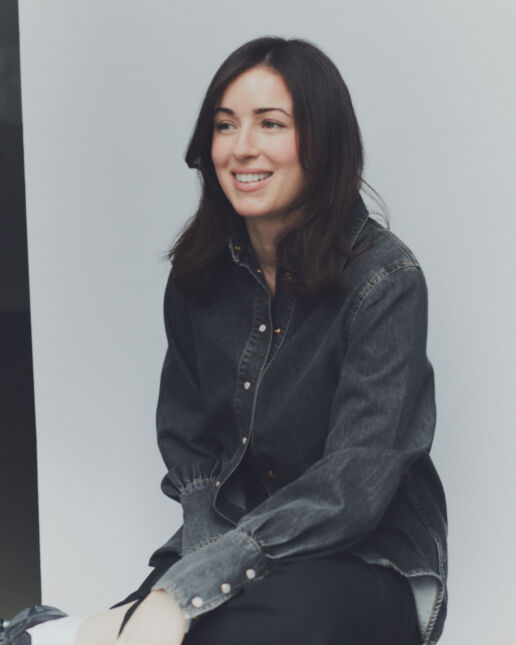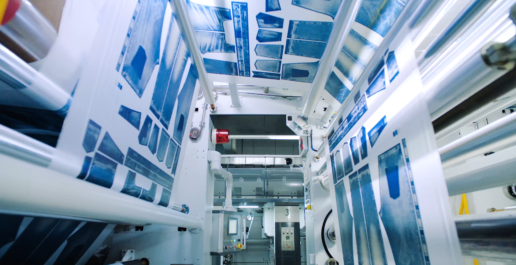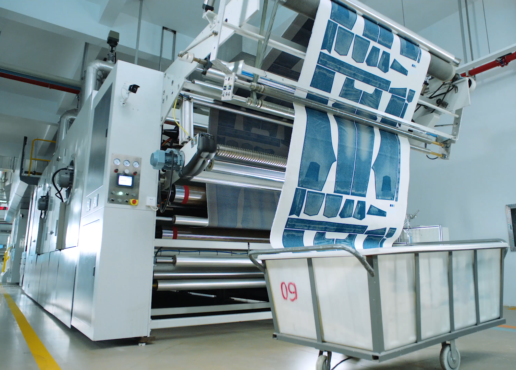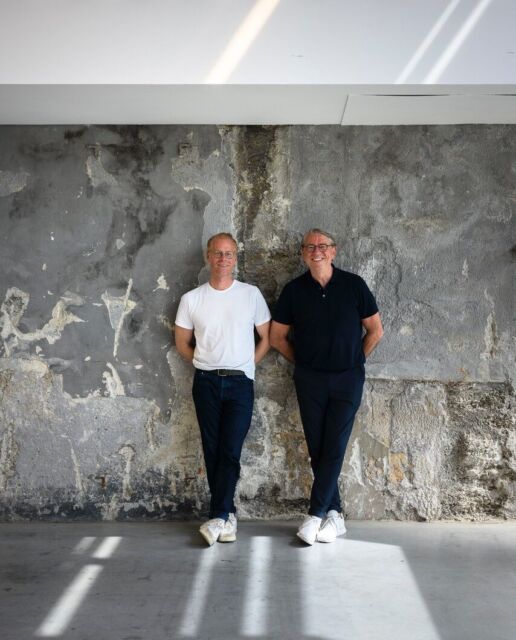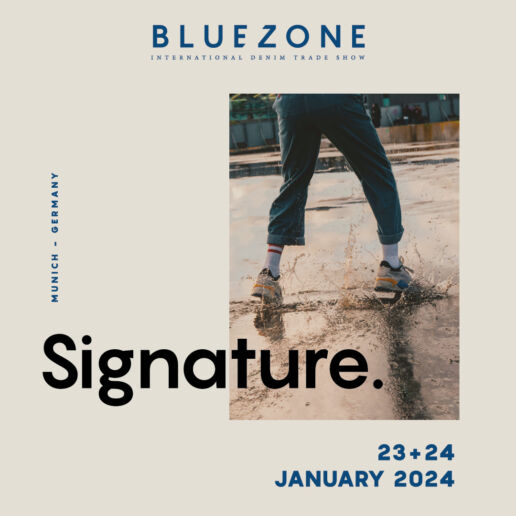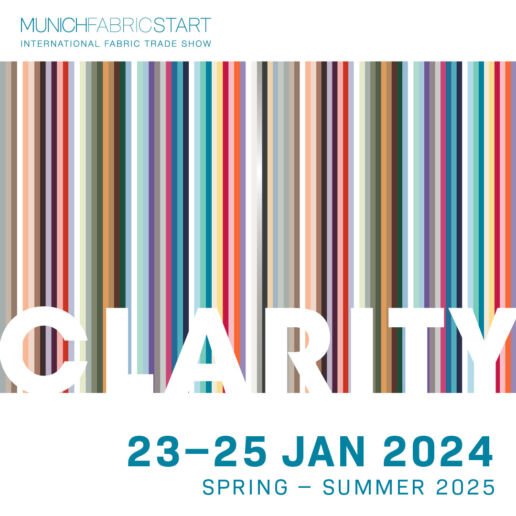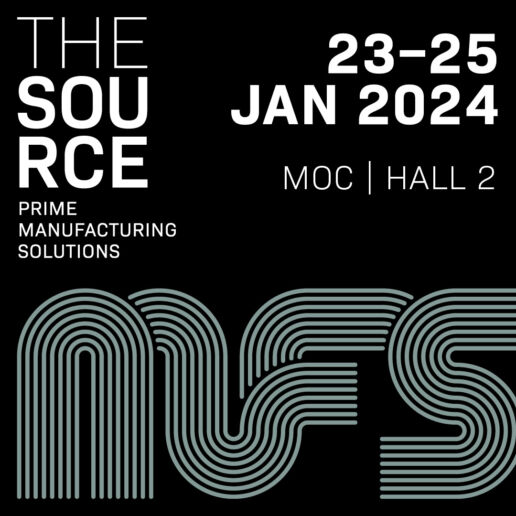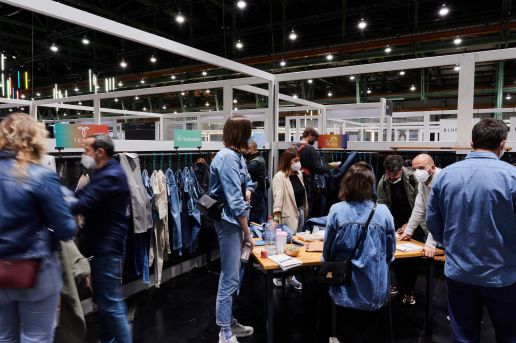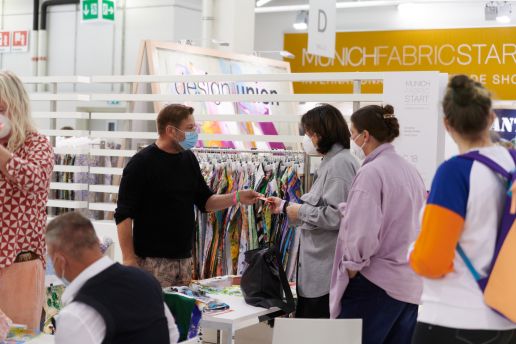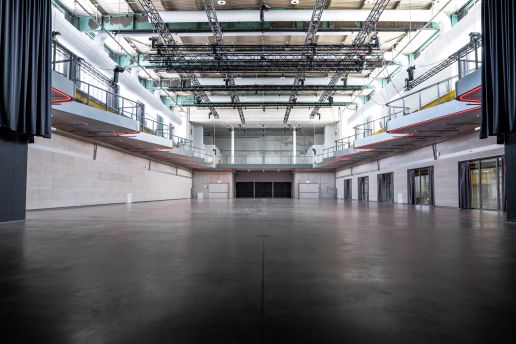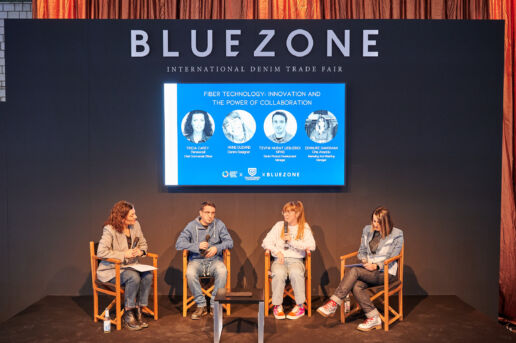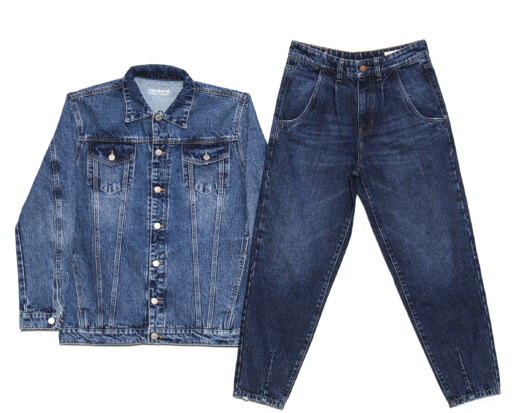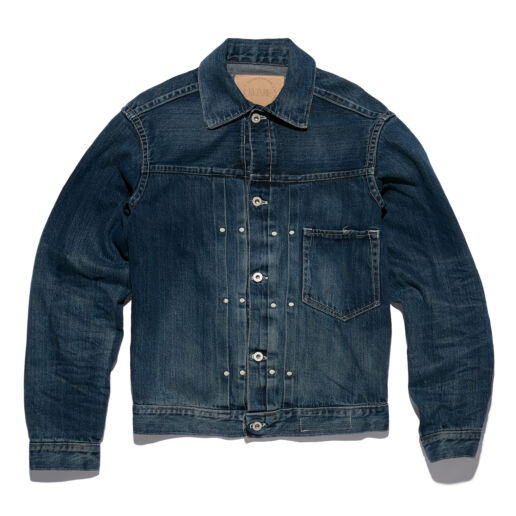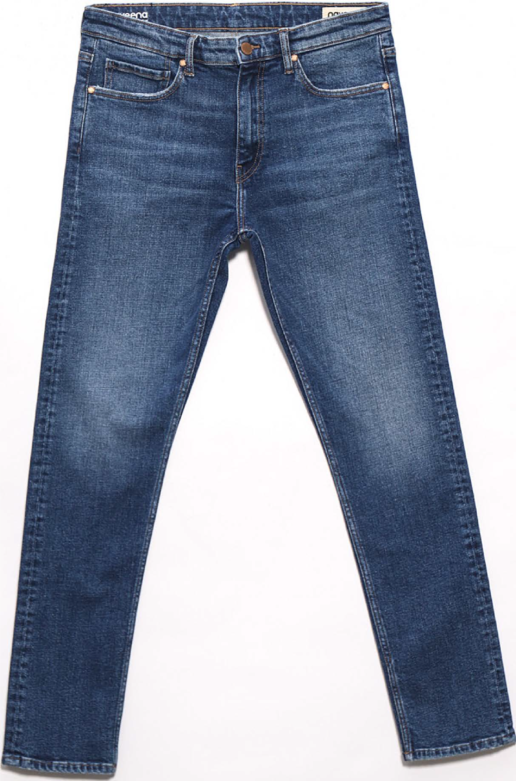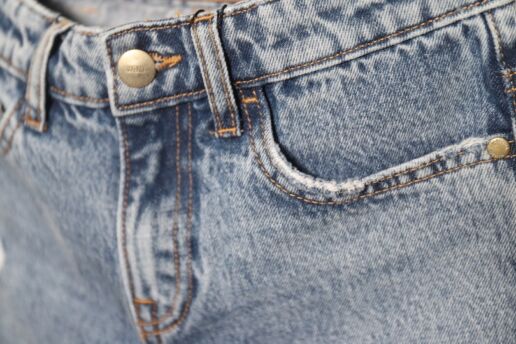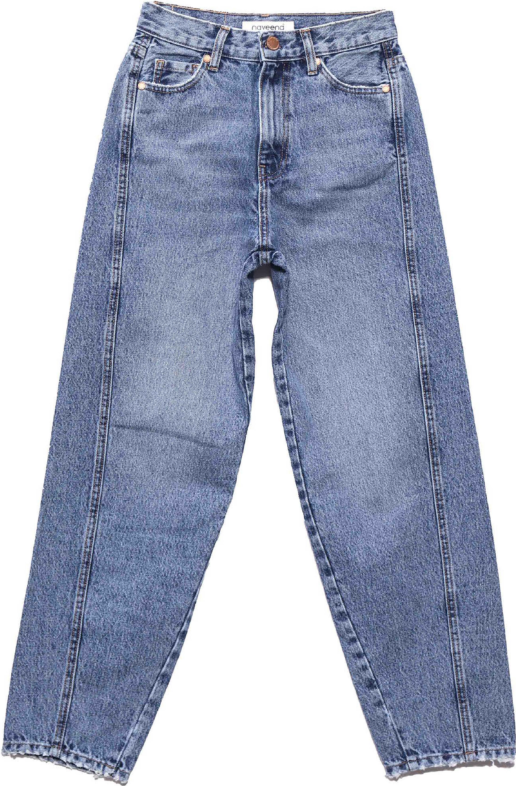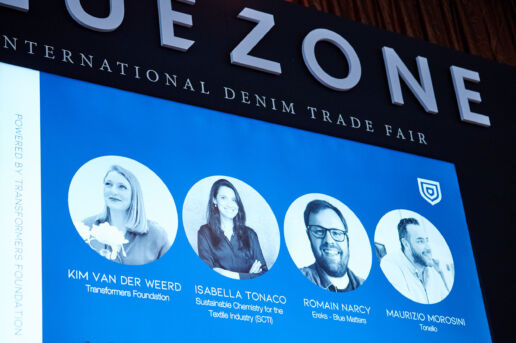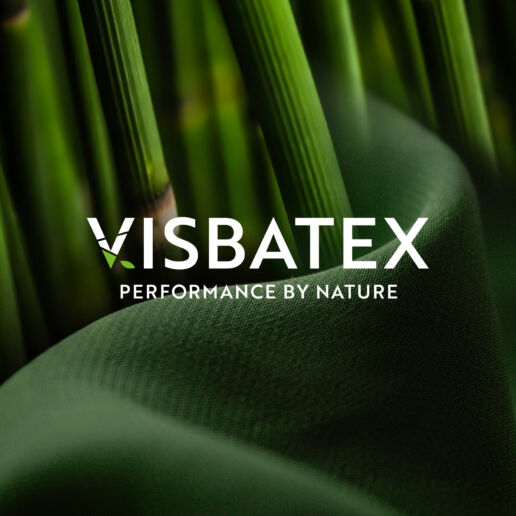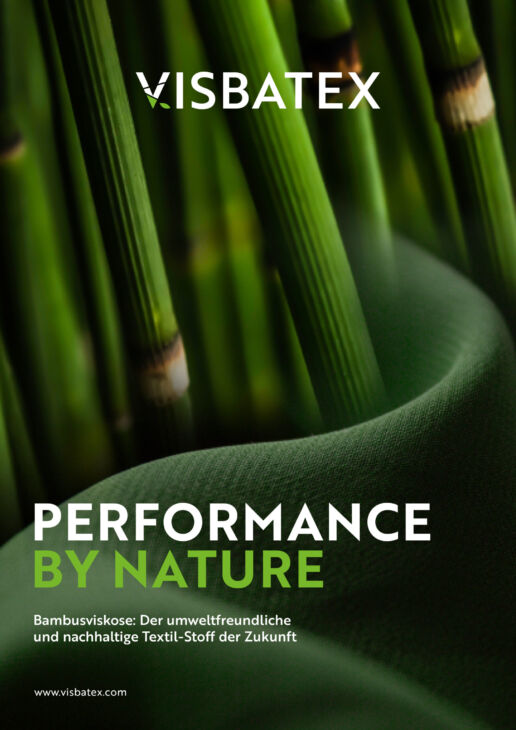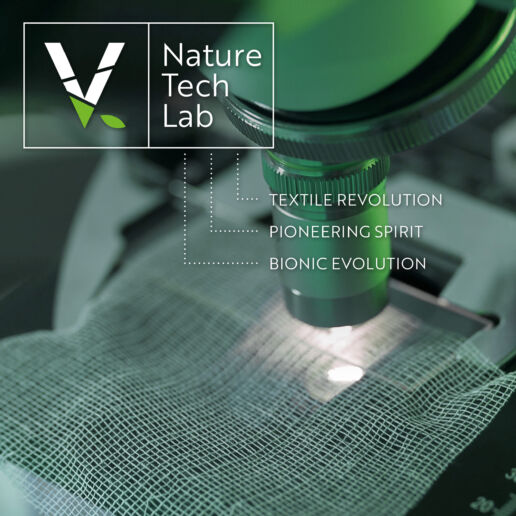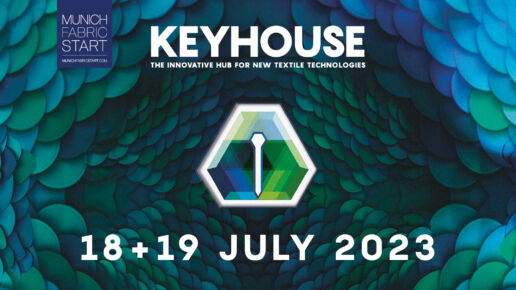Interview
GANNI – Fashion made from next-gen materials
Munique magazine contributor Muchaneta ten Napel, recently had the opportunity to sit down with Lauren Bartley, the Chief Sustainability Officer at GANNI to dive into the brand’s sustainable initiatives and vision for the future of fashion.
Muchaneta ten Napel (MTN): “Lauren, can you share with us GANNI’s journey towards sustainability and how it’s integrated into your brand’s ethos and fashion design?”
Lauren Bartley (LB): “Absolutely, Muchaneta. It starts with our founders Ditte and Nicolaj, who are personally passionate about the topic of sustainability and hacking the fashion system – it’s at the core of everything we do at GANNI and has been key to our progress in the area. In 2019, we created our first sustainability strategy the GANNI Game-plan comprised of 44+ goals to reach by 2023 surrounding People, Planet, Product and Prosperity. In 2022, we completed our first strategy and became a B Corp Certified company and now we are well in to our second strategy Game-plan 2.0, running until 2025 – which creates further impact to our business model and operations.”
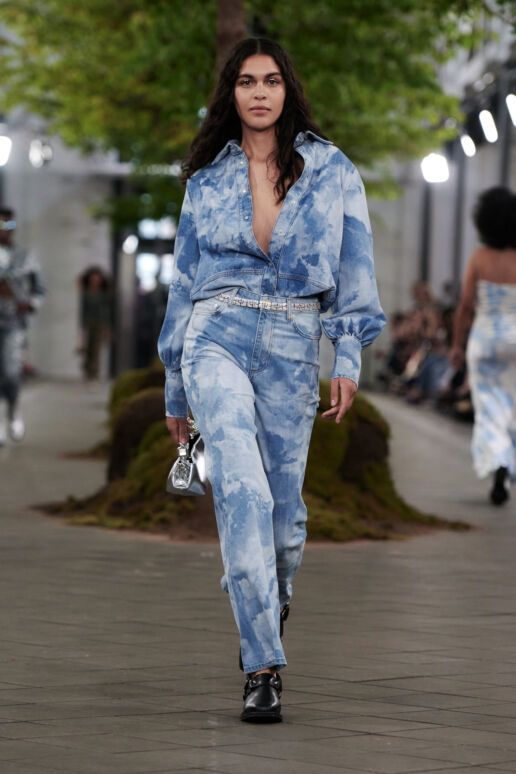
Future Denim Shirt med in Circulose® by Renewcell – a natural material made via textile waste, and Circulose®, which transforms textile waste into a new material without the need for cotton fields, oil, or trees
Our GANNI Bou bag in Ohoskin, made from orange and catus 100% Ohoskin (48% plant-based content, 52% Recycled Plastics)
Photo by Mathias Nordgreen
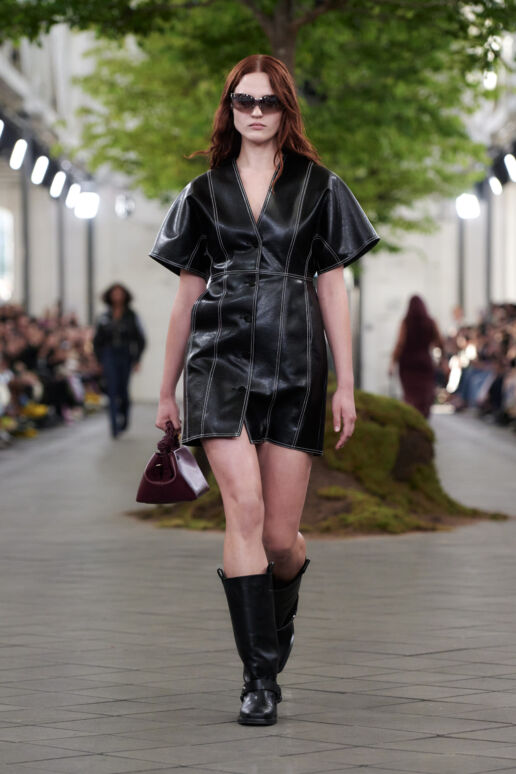
Dress in Oleatex – a plant-based olive leather alternative made from waste streams from olive oil production.
Our GANNI Bou bag in Ohoskin, made from orange and catus 100% Ohoskin (48% plant-based content, 52% Recycled Plastics)
Photo by Mathias Nordgreen
M.T.N.: “What are the unique challenges and opportunities you’ve encountered in incorporating next-generation materials into GANNI’s collections?”
L.B.: “The opportunity is to re-think fashion as we know it and empower our designers to do what they do best – get creative – and create something beautiful. We’re committed to working with fabric innovation as it’s the only way we will reach our ambitious carbon reduction goals – a 50% absolute carbon reduction by 2027. By 2025, 10% of our collections will be made from Fabrics of the Future. There are obviously challenges too, especially around scalability and the commerciality of the materials and that’s why it’s so important for us to invest and encourage other brands to invest too, because we all desperately need the solutions the innovators are offering. Commercial viability, but it’s essential to invest in these innovations.”
M.T.N.: “How has GANNI’s experience been in piloting new textiles on a smaller scale, and what impact has community feedback had on these initiatives?”
L.B.: “We will always introduce a new fabric innovation through a pilot project, to test and learn and get feedback from our community. So far, the response has been extremely positive. For us it’s about seeing these next-gen materials as something new and not comparing it to existing materials and fabrications.”
M.T.N.: “Navigating the costs and investments in sustainable materials is crucial. Can you discuss GANNI’s approach?”
L.B.: “Its early days, for now we have piloted around 10 material innovations, but the challenge is really to scale them to a commercially viable status. The pilots are an investment for GANNI, with no clear return on investment, that is not a sustainable model for any company and that is why we need these innovators to succeed and for GANNI to do whatever we can to help make it possible. We will have Renewcell’s Circulose in our main collections in 2024 and scaled and it’s exciting to see how that resonates with our community.”
M.T.N.: “Could you share insights into GANNI’s strategies for circular fashion and waste management?”
L.B.: “As part of our Game-plan 2.0 and commitment to Circularity, we have a goal of 5% of revenue coming from circular business models by 2025 from a 2021 baseline. With our Circular Business Models we look at new business models that have potential to reimagine the fashion industry as we know it. Currently, we are revising the Circularity strategy and will be sharing more on our goals within the pillars ‘Designed for Circularity’, ‘Recycling’ and ‘Circular Business Models’ in early 2024.”
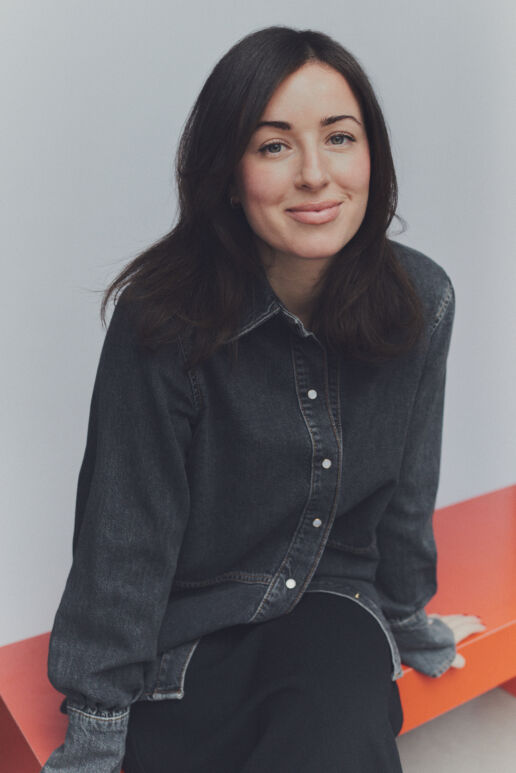
M.T.N.: “How does GANNI approach consumer education regarding sustainable fashion?”
L.B.: “Our biggest communication channel on Responsibility is our instagram account @GANNI.Lab where 100% of the feed is dedicated to our journey in becoming the most responsible version of ourselves. This is very much about what GANNI needs to do and where we are on our journey and does not put the onus on the end consumer. With all our communication we try to speak to our community in a meaningful and honest, not perfect way, showing the hard stuff, the stuff we didn’t get right, as much as we show the stuff we nailed.”
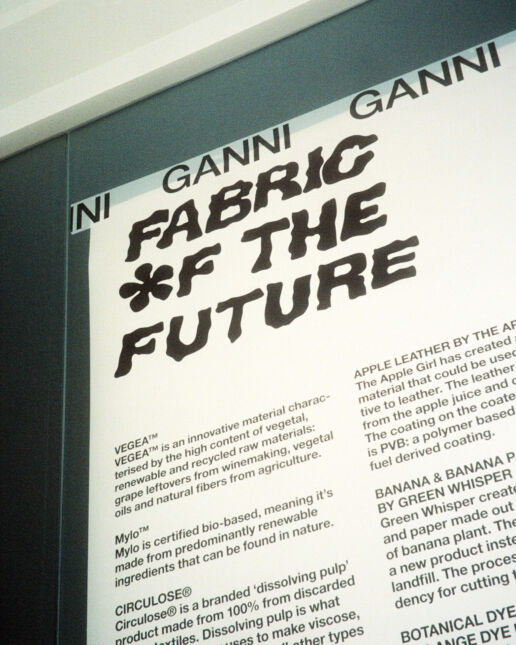
M.T.N.: “In the context of forming partnerships, what insights can you share about GANNI’s collaborations?”
L.B.: “We believe in the power of industry collaboration, no brand will succeed in a sustainable transition alone. GANNI works with over 30 material innovators and 13 partners and software solutions to help us progress on environmental sustainability, social sustainability and traceability. We would not be where we are without our partners.”
M.T.N.: “As the Chief Sustainability Officer, what is your vision for the future of sustainable fashion?”
L.B.: “For me, the onus is on the brands to offer more sustainable solutions to its customers – whether that be more responsible fabrics, transparent supply chains, workers paid a living wage and the adoption of new business models such as resale. We cannot force people into sustainable fashion, but by making it convenient, accessible and raising the education and awareness of some of the challenges and ultimately solutions in the industry, we can encourage more responsible consumption and behaviour. It’s a brave endeavour for a brand to recognise their own shortcomings, but being transparent, being honest and not perfect solidifies the value and integrity of the company- which ultimately, we can all appreciate as consumers”.
Are you interested in more in-depth facts and figures on the new textile industry?
Visit the Shape Innovate Lounge in H5 | 04 or take part in the mini-lectures in the Keyhouse.
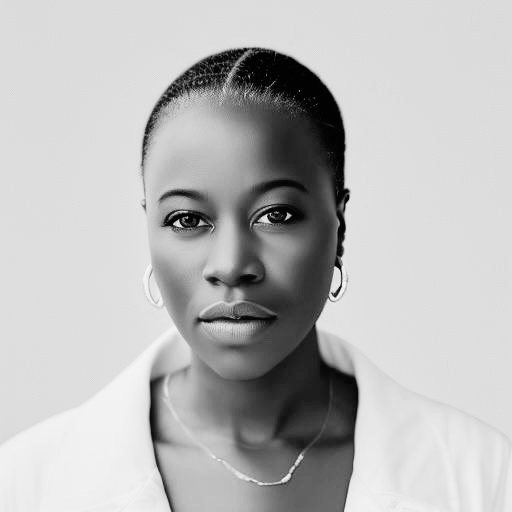
About the author
Muchaneta Ten Napel is the founder of Shape Innovate, a company that critically examines the economic impact of the fashion industry and publishes comprehensive, data-driven research, white papers and forecasts that shed light on the fiscal dynamics of both fast fashion and sustainable fashion practices.
In addition to running Shape Innovate, Muchaneta is the driving force behind FashNerd.com, her own digital platform dedicated to the latest tech developments in the fashion industry. As well as writing for her platform, she has also contributed to Vogue Business and is currently a senior contributor at The Interline.
Muchaneta is a lecturer at London College of Fashion (UAL), has taught at Conde Nast College of Fashion and UCL and has held a workshop at Zurich University of the Arts to share her extensive knowledge.
With extensive industry experience, Muchaneta is also a fashion innovation consultant and has authored in-depth research for companies such as LVMH Atelier.Muchaneta, who was actively involved with the UNFCC and Climate KIC during COP27, is now Chair of the Cultural and Creative Industries (CCI) Taskforce for the UN Climate Change Global Innovation Hub.
To further expand her influence, Muchaneta hosted the Innovation Stage at the Global Fashion Summit in Copenhagen and is a board member of the Fashion Innovation Center, where she contributes her strategic insights to further revolutionise the industry.
Muchaneta ten Napel | m@shapeinnovate.com
This might be also interesting for you:
The Power of Data: Understanding How Data Tackles Challenges in the Textile Industry
31. January 2025
Data might feel intimidating for the fashion and textile industry, but it holds the power to unlock transparency, boost efficiency, and spark innovation...
MUNICH FABRIC START & BLUEZONE – Essence of Innovative Design & Smart Strategies in Challenging Times
24. January 2025
FLORESCENCE describes the phase in which plants reach their full bloom and is used as a general metaphor for the process of blossoming.
Additionals Trends Spring.Summer 26 – Part 8
20. January 2025
Trims and packaging are branding items we shouldn’t take for granted – they are a signature that transforms the ordinary into the unforgettable.
SPRING.SUMMER 26 FABRIC HIGHLIGHTS & MATERIAL NOVELTIES – PART V
19. January 2025
Their philosophy,“Drawing art with threads, conveying emotions through embroidery,” ensures every product is not just visually stunning but also deeply meaningful.
The Source Collection’s News at MUNICH FABRIC START
19. January 2025
Neutral sand mélange and off-white jacquards set a sophisticated tone, while soft yarn jersey pieces bring effortless comfort.
Additionals Trends Spring.Summer 26 – Part 7
18. January 2025
Whether haptic or visual - it's all about contrasts, which in combination provide impulses and demand new ways of thinking. Perfect for brands that want to make bold statements!
Kantamanto Social Club
17. January 2025
The mission of Kantamanto Social Club is clear: to empower communities in the Global South. It aims to shine a spotlight on communities, particularly those whose circular and regenerative practices have been undervalued for too long.
Curiosity, Courage and Craftmanship
17. January 2025
The projects I selected this season challenge us to rethink everything from raw materials to end products and production processes, whilst emphasising on sustainability as an ongoing dialogue.
Cartoon – Fashion for courage, joie de vivre and self-realisation
16. January 2025
Welcome to Cartoon - your invitation to a life full of courage, joie de vivre and self-realisation!
The Source Collection’s News: EAST
16. January 2025
Fashion is not only about following trends, but also about expressing your creativity and personality.
STELLA BLU PRESENTS ITS FIRST COOLTRANS DENIM COLLECTION MADE WITHOUT INDIGO
Stella Blu is very proud to announce to be the first Denim mill in the world to adopt the use of NTX Cooltrans – the revolutionary waterless coloration technology into its production of denim & colored denim fabrics.
The coloration process happens with extreme precision and consistency every time and is applicable to almost any fabrics, natural, cellulose-based or synthetics man-made without the need for heat and over 90% reduction in water usage without compromising the fabric’s engineered feel or functional performance.
Conventional denim has an extensive use of water, heat and chemicals starting from the initial processes of fabric making – dyeing yarns into several indigo baths – all the way down to laundry processes to create that vintage distressed look.
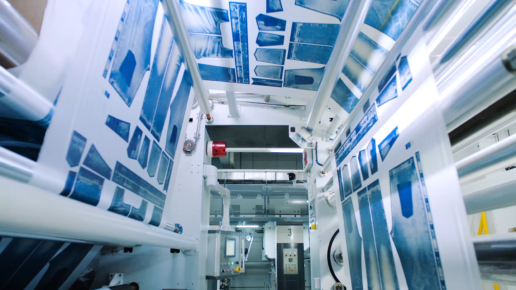
“With Cooltrans, we are able to completely eliminate these two processes.”, says Marco Stefanelli, director of marketing & business development at Stella Blu. “We start from a white PFD fabric and then the coloration process happens without heat at both sides simultaneously in only one single pass—the front face gets the printed washed look and the back side face gets printed with the twill line or any other pattern the client’s desire.”
This technology opens up extremely exciting possibilities. For instance, clients could have a single quality greige and print nearly infinite combination of aesthetics. By doing so, they can drastically improve the speed to market with much lower SKUs.
Many denim brands today maintain extensive material libraries, consisting of well over 500 different types of fabric, solely for the purpose of achieving a desired look. However, with Cooltrans, the aesthetic can be completely independent of the fabric composition. By calibrating the process to a specific fabric base, brands can achieve a wide range of aesthetics on a single twill type, resulting in tremendous costs savings.
Furthermore, addressing the environmental impact of indigo dye is a shared concern within the industry. Cooltrans is seen as a promising solution to reduce the toxicity associated with indigo dye as there is no indigo involved in the entire process, which is an additional key point that many brand houses view it favourably.
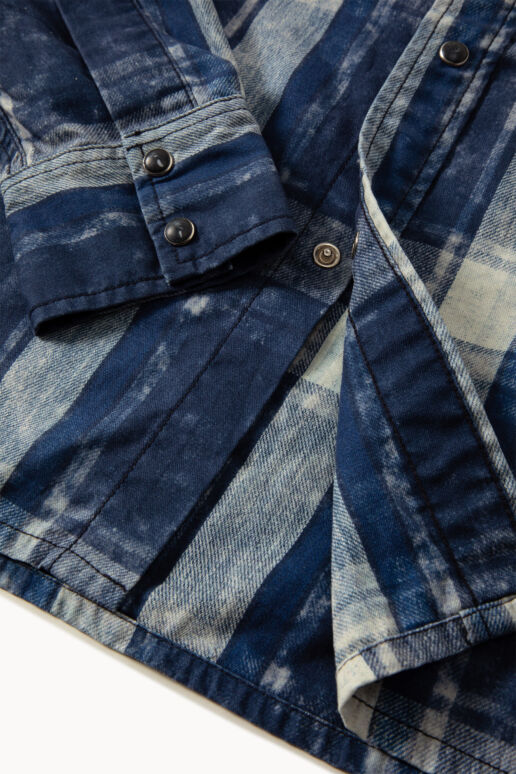
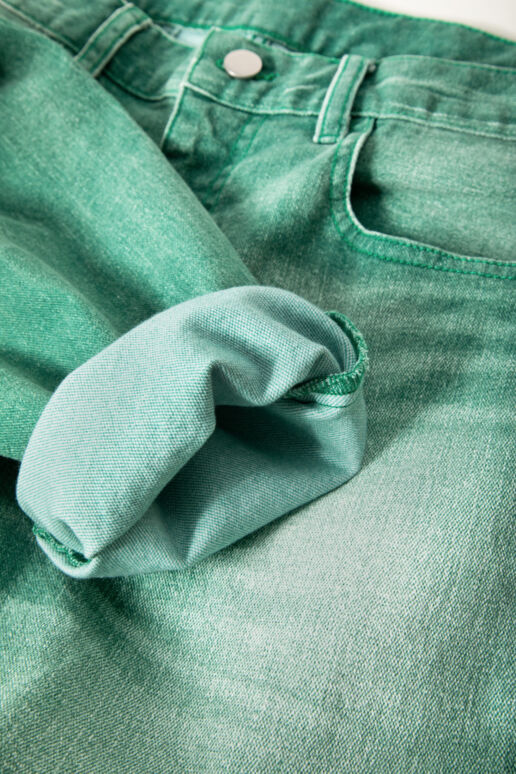
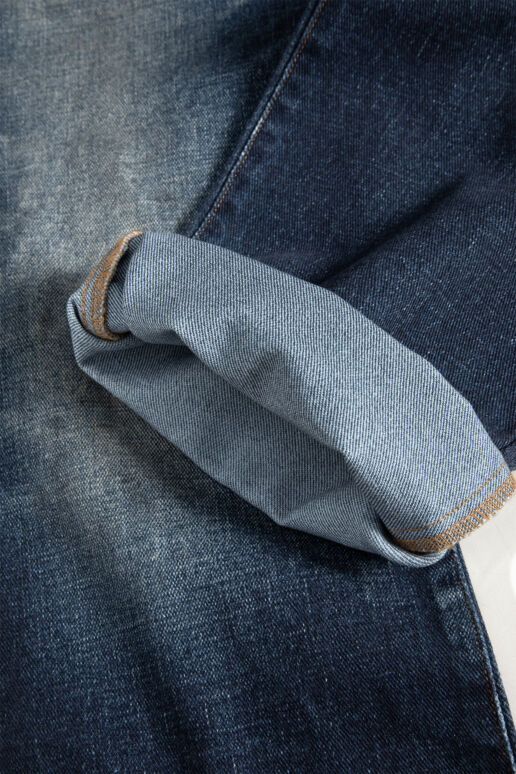
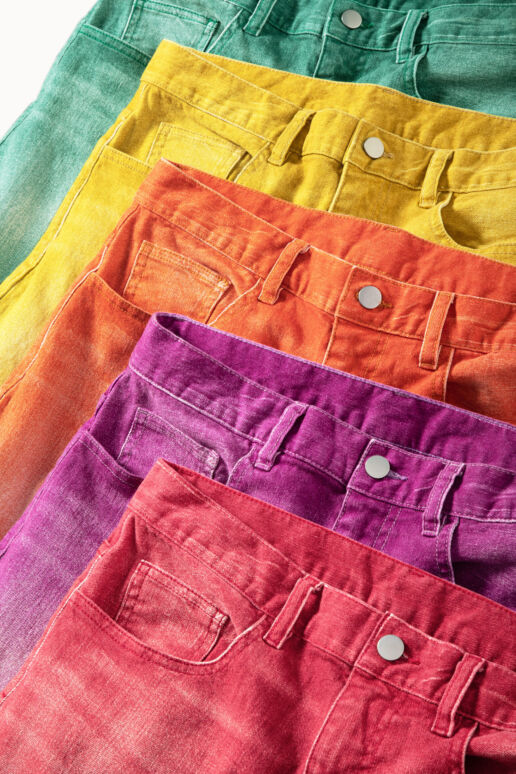
Meet the Stella Blu Team at Bluezone in Hall 7 | B 16.
This might be also interessting for you:
SPRING.SUMMER 26 FABRIC HIGHLIGHTS & MATERIAL NOVELTIES – PART V
19. January 2025
Their philosophy,“Drawing art with threads, conveying emotions through embroidery,” ensures every product is not just visually stunning but also deeply meaningful.
The Source Collection’s News at MUNICH FABRIC START
19. January 2025
Neutral sand mélange and off-white jacquards set a sophisticated tone, while soft yarn jersey pieces bring effortless comfort.
Additionals Trends Spring.Summer 26 – Part 7
18. January 2025
Whether haptic or visual - it's all about contrasts, which in combination provide impulses and demand new ways of thinking. Perfect for brands that want to make bold statements!
Kantamanto Social Club
17. January 2025
The mission of Kantamanto Social Club is clear: to empower communities in the Global South. It aims to shine a spotlight on communities, particularly those whose circular and regenerative practices have been undervalued for too long.
Curiosity, Courage and Craftmanship
17. January 2025
The projects I selected this season challenge us to rethink everything from raw materials to end products and production processes, whilst emphasising on sustainability as an ongoing dialogue.
Cartoon – Fashion for courage, joie de vivre and self-realisation
16. January 2025
Welcome to Cartoon - your invitation to a life full of courage, joie de vivre and self-realisation!
The Source Collection’s News: EAST
16. January 2025
Fashion is not only about following trends, but also about expressing your creativity and personality.
KEYHOUSE NEWS – PaperTale
15. January 2025
Whether you’re exploring product traceability, seeking to streamline compliance, or driving sustainability, PaperTale provides the tools to stay ahead in a rapidly evolving industry.
Additionals Trends Spring.Summer 26 – Part 6
15. January 2025
From timeless luxury to durable workwear solutions, each collection reflects their commitment to responsible sourcing and innovative design.
SPRING.SUMMER 26 FABRIC HIGHLIGHTS & MATERIAL NOVELTIES – PART IV
14. January 2025
The colour palette of the 2026 summer collection invites you to dream.
CLARITY In conversation with the organisers of MUNICH FABRIC START about the industry, the trade show calendar and new dates
New year, new beginnings – what’s new at MUNICH FABRIC START in 2024?
Sebastian Klinder: In 2024, MUNICH FABRIC START will continue to serve as a central European anchor point for the fashion industry, combining creativity and business. When it comes to scheduling and organising our events, we want to meet the needs of as many exhibitors and visitors as possible, while also taking into account differing rhythms of the industry. For this reason, we have decided to shorten the date in September 2024 to two days in line with the current market requirements – with streamlined schedules at familiar venues. With this scheduling, our shows remain the relevant sourcing platforms that can meet the permanently and rapidly changing needs of the fashion industry against a background of efficient time and budget management. MUNICH FABRIC START, BLUEZONE as an international trade show for denim, streetwear and sportswear, KEYHOUSE as an innovation hub and THE SOURCE, where products and services relating to the latest sourcing services and apparel manufacturing take centre stage, will therefore take place on 3 and 4 September.
Frank Junker: Of course, a lot will remain the same this year – in the best possible sense. We are looking forward to many long-standing exhibitors as well as new faces who will present their latest developments at MUNICH FABRIC START. With MUNICH FABRIC START, THE SOURCE, BLUEZONE and KEYHOUSE, we are creating a framework that reflects the industry as well as the latest trends and innovations in all their facets. And the line-up of our carefully curated seminar program includes numerous highlights that should not be missed.
» CLARITY is about the pursuit of structure and unambiguousness on both a large and small scale «
„Clarity“ is the title of the new summer season. What’s behind it?
Sebastian Klinder: “Clarity” describes the pursuit of structure and unambiguousness on both, a large and small scale. Both are increasingly rare in the context of the current realities of our lives, because today everything is relative or relocatable. In view of this increasingly diffuse situation, we are also intuitively searching for orientation – both, on a large and small scale. Fashion, design and aesthetics are no exception. Consumers also want clarity, for example with regard to production and supply chains. So, there is also a constantly growing requirement for information that needs to be satisfied.
Frank Junker: Balancing and harmonising opposites serve as a central source of inspiration, for example in reconciling traditional craftsmanship and new technologies that can make the industry more sustainable. By balancing the dichotomies that move the industry – new and old, rural and urban, functional and decorative, self and society – new ideas can emerge that creatively prepare for the challenges of today and the future.
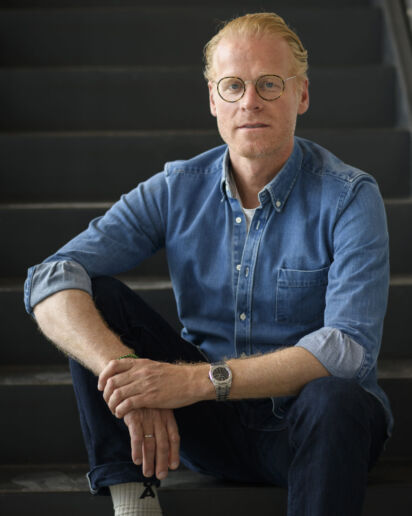
The fashion industry and the corresponding trade show landscape – especially in Germany – are currently in a phase of upheaval. As the organiser of MUNICH FABRIC START, how do you see your role in this context?
Sebastian Klinder: As a platform for high-quality fabrics and materials, MUNICH FABRIC START plays a central role in the German fashion landscape. We want to create the ideal environment for business with a high-quality, comprehensive exhibitor portfolio and the right scheduling. Our aim is not to set trends, but to reflect the most relevant ones, thereby strengthening the entire value chain and driving the development of the industry. With our holistic ecosystem consisting of Fabrics, Additionals, Bluezone, Per4mance, ReSource, Design Studios, Keyhouse, Sustainable Innovations and The Source, we fulfil this aspiration at MUNICH FABRIC START. Through targeted coordination with the industry, we offer an ideal atmosphere in which future-oriented players can come together.
Frank Junker: MUNICH FABRIC START is a creative hub that gives designers space to bring their ideas to life. We see ourselves as trailblazers for creative and technological innovations and thus as a driving force for the further development of the fashion industry. In this context, the topic of sustainability, for example, is firmly anchored in the program of our events. In addition, we attach great importance to our range of trend forums and presentations in order to be able to offer our guests the most holistic, future-oriented program possible, which serves the need for orientation and inspiration in equal measure and, last but not least, brings the entire industry together for exchange, networking and get-togethers.
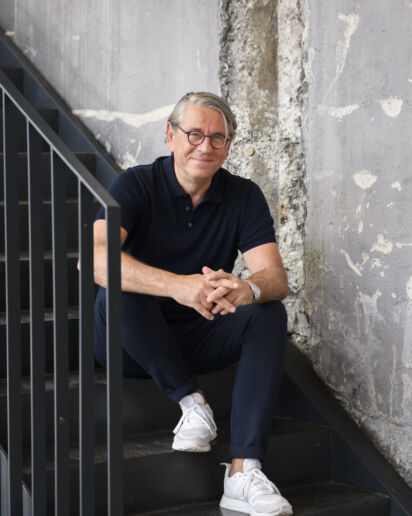
Discover more industry-changing innovations at our upcoming trade fairs:
THE COMEBAG PROJECT
Handmade with love in M/UNIQUE
A team of young fashion designers has realised a great upcycling project in the last few weeks: they have sewn unique bags from former trade fair materials such as flags, various trade fair banners and carpet left overs from the MFS, giving the materials a meaningful purpose. The unique pieces of the limited edition THE COMEBAG bags can be purchased at the Concept Store in front of Hall 4 for 15€ per bag.
BORNEMANN ETIKETTEN supplies biodegradable labels in a print & weave combination for this unique project. The production of the labels comes from beautiful Portugal. Discover individual label solutions at BORNEMANN ETIKETTEN in H1 | B 20.
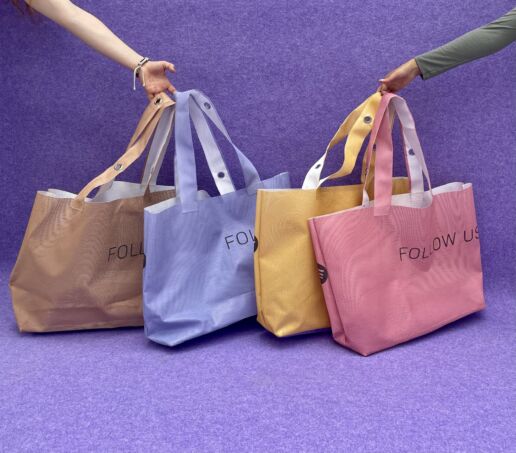
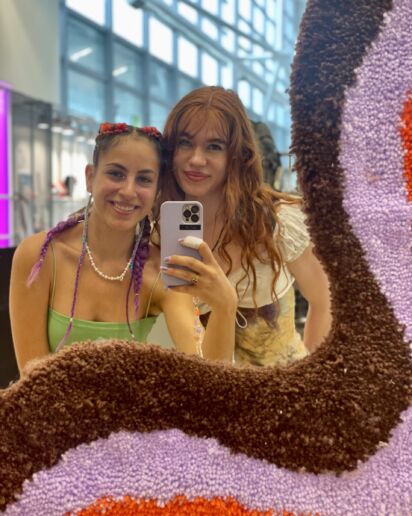
Master tailor Elina Chauan started her own business shortly before THE COMEBAG project and founded her label Elina.Chauan.Fashion – she produces handmade unique pieces in the unique “mushroom” cut. Elina specialises as a bag designer and brings her creative ideas to her handmade products.
Charlotte Hansel “Charly”, who actually works in dance, has also discovered her passion for fashion in recent years and taught herself to sew. Charlotte has already appeared in music videos and commercials and plans to continue her education as a choreographer to perform on the big stages as an artist.
The two met during the preparations for the MUNICH FABRIC START trade fair a year ago and became friends through their work together. Their common credo is:
You can create something out of anything and thus make the world more colourful and sustainable.
The idea for the project came about mainly because of the striking colour of the carpet, which immediately catches the eye. It would simply be a shame not to make further use of the beautiful existing materials – especially in view of the sustainability aspect, which plays a major role at the fair. We attach great importance to illustrating that something new can be created from every thing. It’s fascinating how we can use creativity and innovative thinking to create something completely new and impressive from seemingly insignificant or everyday objects.
Our goal is to inspire people to broaden their perspectives and see the potential in everything, be it materials, ideas or situations. We want to challenge the boundaries of what is possible and show that there are no limitations when it comes to creating something unique and meaningful.
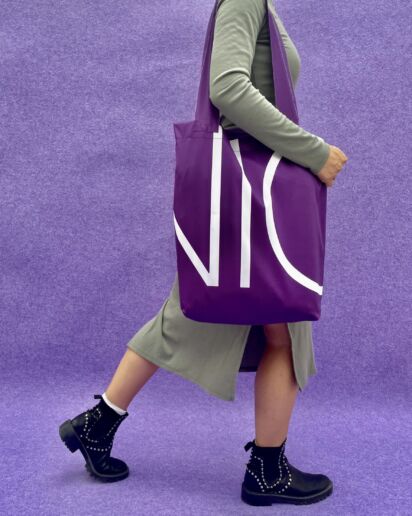
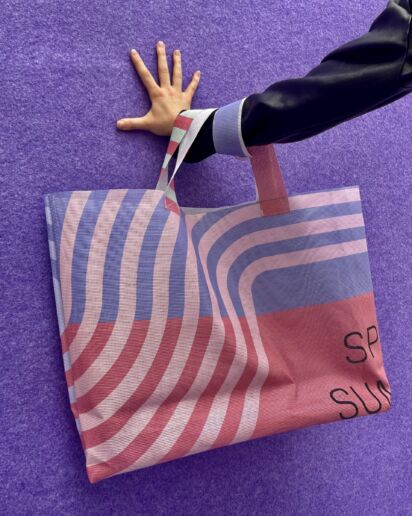
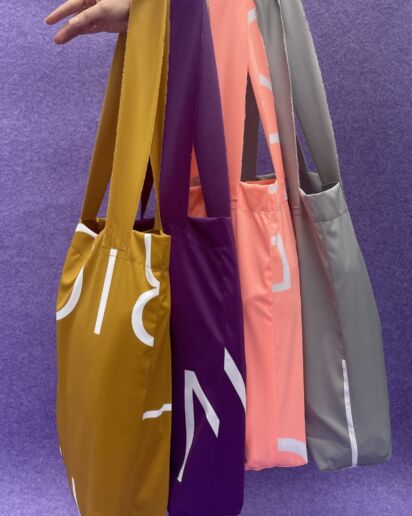
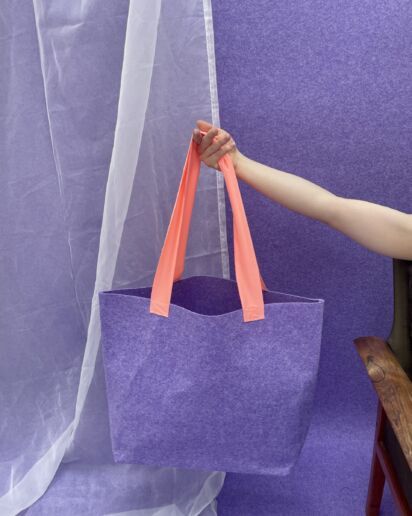
Discover more industry-changing innovations at our upcoming trade shows:
Bluezone Highlights
AMD X Naveena
We are born with 5 senses. They accompany us for a lifetime. Let us feel, taste, hear our environment, smell and see what surrounds us. Within 5 Groups of mixed courses from students of Fashion Design (B.A.), Fashion & Design Management ( B.A.)and Fashion Journalism & Communication (B.A.) the students from the Dusseldorf based AMD Akademie für Mode & Design, faculty design of Hochschule Fresenius, analyzed the importance and impact of our senses in context of Denim.
Why Denim? Because this beautiful and rich material like no other embodies senses and sensuality the best. In times of digitalization and virtual universes, it is our fabric of choice that symbolizes it´s human connection the best.
Join us on the Blue Zone area in Hall 7 | A 01 and get in touch, hear, feel, smell and also taste what Denim Senses triggers in yourself!
The 5 DENIM SENSES are brought to live thanks to the generous support from Naveena Denim Mills who provided the denim fabrics for this project:
The BERRIT I95 fabric includes hemp and belongs to Naveena’s CANNA DENIM concept which is made of cottonized and mechanical hemp composition around 20%. It is durable, breathable, anti-bacterial, requires 70% less water comparing to cotton and no pesticides. Plus it growths 3-4 times faster than cotton. KEATON I73 combines hemp and Tencel together.
MORGAN B56 includes recycled linen and belongs to Naveena’s LINO+ concept: fabrics with smart linen fiber, created by post industrial waste. They are GRS certified, breathable and moisture wicking.
VIDIC I81: Includes BioHemp and is part of Naveena’s BIOTECH concept. The mill teamed up with Circular Systems in a unique collaboration that transforms agricultural crop left-overs into scalable, high-value natural fiber denim fashion products with their Agraloop™ technology. BIOTECH fabrics are made with natural fiber derived from CBD hemp crop residue and refined into textile-grade fiber called Agraloop™ BioFibre™. These fabrics are also compliant with the Global Recycled Standard and Organic Blend Content Standard.
OLITA B91 and GLENN B56 are part of their RETROTECH concept which is inspired by retro denim heritage and remixing it to modern day living. Retrotech provides wear comfort without sacrificing vintage authentic look. For more comfortable fits, Naveena blended high and lows with stretch resulting in a modern vintage cotton with a stretch blend.
TRANSFORMERS FOUNDATION
Initiated in September 2022, the TRANSFORMES FOUNDATION teamed up with BLUEZONE to join forces to educate and inspire the Denim industry. Their vision is to connect their networks, to share relevant content and profound insights of industry-relevant developments and challenges and to provide information and inspiration – all at once.
On 18 July, the TRANSFORMERS FOUNDATION will hold a panel discussion about the legislative landscape in Europe, the UK, and the USA is evolving quickly and is likely to have far-reaching implications for apparel suppliers worldwide. On 19 July, they will explore the critical ethical questions needed to unlock meaningful decarbonization action.
The Transformers Foundation brings together the voices of the denim industry with social actors to provide impulses for positive change in the industry. It is an interface between brands, NGOs, consumers and the media. “Transformers” stands for all those stakeholders within the denim supply chain and beyond who want to actively participate in this change and transformation.
Join the TRANSFORMER FOUNDATIONS events: SEMINAR ZONE, BLUEZONE HALL 7
A Supplier’s Guide to Key Sustainability Legislation in the EU, US, UK
TUESDAY, 18 JULY from 3.00pm – 4.00pm
Decarbonizing Denim: The Denim Supply Chain Speaks Up
WEDNESDAY, 19 JULY from 11.00am – 12.00pm
Discover more industry-changing innovations at our upcoming trade shows:
Visbatex - Performance by nature
Green revolution with bamboo
Visbatex shows its revolutionary high-performance fabrics made of bamboo viscose at Munich Fabric Start
Performance by nature – Visbatex is a pioneer in the production of high-quality textiles based on bamboo viscose and sets standards in the implementation of a holistic circular economy and European production standards. At the Munich Fabric Start from 18 to 20 July 2023, the Munich-based company will show how high-tech and sustainability go hand in hand. Visit Visbatex in Hall 2 at Stand B 13.
Fabrics made of bamboo are rightly considered an ecologically sound alternative to conventional textiles. The product properties of the fibre of the rapidly renewable natural raw material are too superior. Bamboo offers excellent wearing comfort. The fabric has an antibacterial and thus odour-inhibiting effect. Microscopically small holes in the fibre ensure breathability and rapid moisture transport. And as a natural UV barrier, bamboo filters up to 97.5% of harmful UV radiation.
The young company Visbatex combines all these properties in its new revolutionary high-performance fabrics based on at least 50 % bamboo viscose. This world innovation is developed and refined in the company’s own Nature Tech Lab. Visbatex’s own laboratory is the heart of the company’s product development, with which Visbatex is driving forward the transformation of conventional textiles into high-tech materials with a great pioneering spirit. The goal of Visbatex’s textile revolution is a bionically inspired evolution of classic fabrics. Visbatex has already applied for a patent for the composition of its fabrics based on bamboo viscose. The bamboo viscose from Visbatex is sold as a blend with other textiles such as recycled polyester or organic cotton.
But it is not only the product properties of Visbatex textiles that are convincing. The production in Europe and the implementation of a holistic circular economy also set standards. “As a company, we want to live up to our social and ecological responsibility,” says Klaudia Atelj, Managing Director of Visbatex. “Visbatex is environmentally friendly, durable, very hard-wearing and dimensionally stable.“
A variety of uses derive from all these properties. Besides fashion, these include workwear, medical clothing, leisurewear and, of course, baby and children’s fashion. But even in the automotive sector or in Munich, 30 June 2023 the packaging industry, Visbatex textile fabrics can show off their outstanding quality and performance features.
About Visbatex
Visbatex strives for nothing more and nothing less than a textile revolution. In its own Nature Tech Lab, the Munich-based company develops high-performance fabrics based on bamboo viscose (at least 50 %). The engine of the textile revolution is the pioneering spirit of the young company, which consistently questions standard processes and researches new bionically inspired solutions in an interdisciplinary framework with research and science. The basis for the development of new fabrics is always the possibility of ecological and social production and the embedding in a system of circular economy.
Discover more industry-changing innovations at our upcoming trade shows:
CONNEXXION - SAAT MUNICH
Connexxion – The association
The perfect connection is characterized by the fact that the SAATMUNICH Design Studio has been developing conceptual outfits for the Bluezone Hostess in collaboration with exclusive partners since 2016. The selection of these partners is based on the innovation of a weaver and the expertise of the manufacturer in the transformation of the nominated theme.
Connexxion – The relationship
Sajna Weber and Thorsten Bulander, the creative minds behind SAAT, designs conceptual looks for Bluezone every year. SAAT’s unique concept developments underline their long- term experience in the fields of design, denim, and workwear.
The SAATMUNICH Design Studio has established itself as an innovative and reliable partner in the sustainable production of denim products and corporate wear.
Connexxion – The combination
SAAT means “together” in the Indian language and “that which arises from the seed sown” in the German language. Thus, SAAT’s fashion is a harmonious interplay of different factors that always creates something new. The result is a timeless way of work fashion, stylish and individually tailored to the customer’s needs.
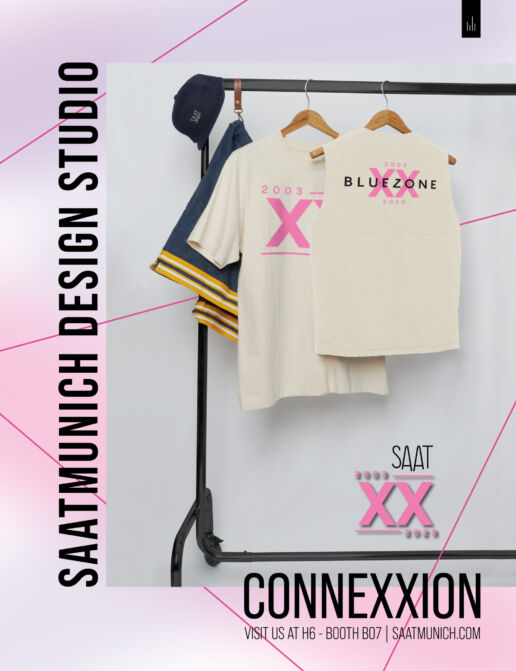

Connexxion – The correlation
The Bluezone hostesses’ anniversary look is a selection of Key-Pieces from the previous year’s outfits. The looks represent the exhibitors and the essential components needed to create something unique in the apparel industry.
“THE HOSTESS LOOK” – The boxy crewneck T-shirt, quilted denim vest and denim shorts echo the Connexxion theme and links all the components of the apparel industry, such as, fabrics, graphics and manufacturers needed to create unique and sustainable products for the fashion world.
Discover more industry-changing innovations at our upcoming trade shows:
HOW DO WE PACKAGE PEOPLE?
We were so looking forward to the time after the pandemic and now this: war in Europe, bottlenecks in the energy supply and the highest inflation in 71 years. We all feel like we are out of luck and ill-fated. And that for a very long time.
Of course, the world wasn’t any better in former times. But it seems so to us. And because we experience the present as so troubled, we try to return to the light-heartedness we felt in the past. “I have decided to go back to my roots in fashion as well as to the roots of Balenciaga, which is making quality clothes – not making image or buzz,” explains Demna. “Fashion has become a kind of entertainment, but often that part overshadows the essence of it, which lays in the way we create relationships between body and fabric,” state his show notes for Balenciaga.
Yes, in essence that’s it: “body and fabric”. JW Anderson sends these two basic ingredients, from which all fashion is created, down the catwalk before he starts his actual show. A naked body and a fresh roll of fabric – that is the tabula rasa, the blank slate on which fashion can reinvent itself once again. “How do we package people?” asks JW Anderson, as if all that were completely open-ended again.

Carl Tillessen
Summarizing the development, Mark Holgate of Vogue said:
“We’re heading into a reset, where all the din and clamor and sheer noise of fashion today doesn’t matter a jot if the clothes aren’t exceptional in their thought and craft. In other words: focus on design, not creating distraction!”
All this refocusing – on the essence of fashion, on the material as a starting point, on the product itself – is reminiscing. This is what fashion is all about right now: taking people on a journey through time to phases of our lives and theirs when we, and everyone around us, were so much more carefree than we are today.
GET INFORMED & INSPIRED AT MUNICH FABRIC START AT DMI:
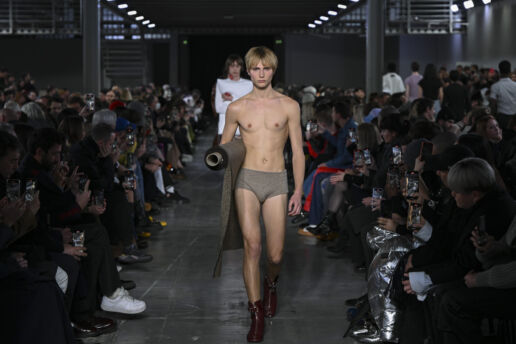
You can find out how you can make this work for you in a personal conversation with the DMI analysts at the DMI Lounge in room K1 in front of hall 1 at MUNICH FABRIC START.
Discover more industry-changing innovations at our upcoming trade shows:
High-tech connection meets low-tech reconnection
Reflecting on the past and looking towards the future – what lies ahead in the sustainable fashion and innovative design industry?
There are two significant factors driving the evolution of the industry at present. Let’s begin with the first topic, which I refer to as the ‘process runway’. On one hand, the term ‘runway’ refers to the well-known fashion runway or catwalk. On the other hand, we can observe the growth of numerous companies and designers with a sustainable focus, who are maturing and becoming more professional, preparing themselves to connect and deliver. From this perspective, it becomes clear that companies and designers understand the need to continuously improve every step of the supply chain, striving for constant enhancement – what I call the process runway.
Could you elaborate on how these labels are improving and changing their production practices?
Certainly. Let’s delve into the example of Knitwear Lab, one of the exhibitors. They demonstrate how one client’s interactions have led to improved production and enhanced quality in several ways. In the past, their manufacturing process began with a rough sketch or digitally drawn idea. Subsequently, one single idea was prototyped multiple times, thus resulting in numerous samples, requiring significant time and numerous adjustments. This process was highly time and material-consuming. To streamline this process, Knitwear Lab embraced digitization. They created a variety of avatars with different size measurements and body types, providing a perfect digital replica for every body shape. With this approach, they can now experiment with more complex designs and experience the implications of different designs and special materials across all sizes, from XXS to XXL without producing supervacaneous samples, thus waste. This is crucial since the details of a finished garment can appear differently on various body sizes. Hence, they first create a digitally perfect fit and high-quality product. Once flawless digitally, it is then manufactured in reality. The benefits are numerous: customization, time and material savings, and cost efficiency – all essential sustainable considerations. Additionally, they can incorporate quality aspects. Cause after all efficient work processes and resource conservation remain significant challenges within the industry.
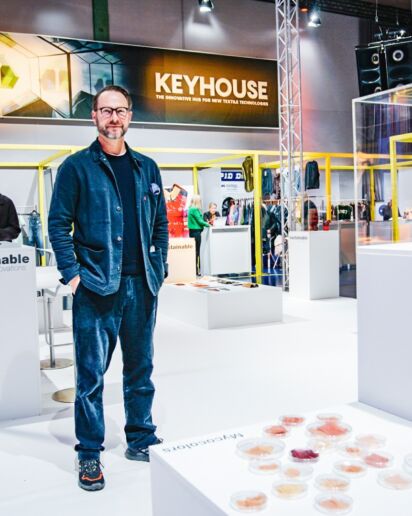
Simon Angel
So, they transitioned from specialized skills to a broader scope?
Exactly. The progression follows this trajectory: initially, we have design studios focusing on their core strengths, on what they excel at. Simultaneously, they are eager to explore avenues for improving the customer journey, sustainability aspects, sourcing or design. It entails broadening their scope of responsibilities and possibilities. Within this transition lies immense potential, but it also presents several challenges. This is the nature of pursuing a goal – people need to collaborate, assume responsibility, and expand their horizons to harness the full potential and become more sustainable and efficient.
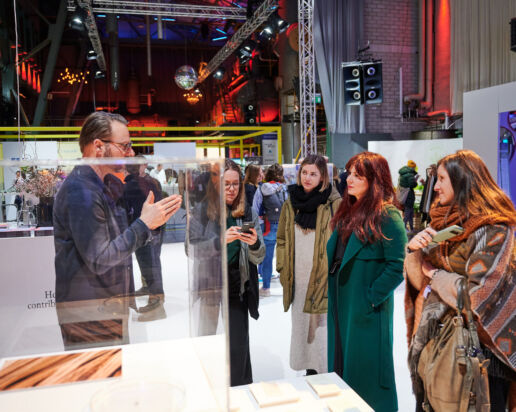
You mentioned another direction at the beginning. Could you elaborate on that?
The other topic revolves around reconnecting with craftsmanship. There is a growing focus on our human nature, on experiencing materials and products through touch, smell, taste… We are redirecting our attention towards engaging our senses. This year, we have exciting projects that facilitate this connection, inspiring people to participate in the knowledge and production processes. To be honest, this craving for tangibility and the opportunity to get hands dirty or experience materials is not limited to the production and design chain alone; it is also a fundamental human need. In the years to come, I am confident that there will be a significant resurgence in reconnecting and rediscovering the purity and authenticity of things.
Are there any synergies, or do these topics merely coexist?
On one hand we have high tech connection using digital advices for improvement and more sustainability, on the other hand low tech reconnection refocusing on craftmanship and human aspects with feeling of the senses. What they do have in common is the very important fact, that without collaboration, nothing would be the same. Studio Sarmite collaborates with Roua Atelier, Crafts Council works with Enschede Textielstad, Meyers & Fügmann cooperate with other designers. If we realize what we and others are doing, we can connect with collaboration and create something even bigger. That is what we experience ourselves at MUNICH FABRIC START: we collaborate a lot as well, for example with BiotexFuture, Berlin Design Farm and Crafts Council. We try to be a partner in acknowledging, introducing and togetherness with other partners to create something bigger in joint forces.
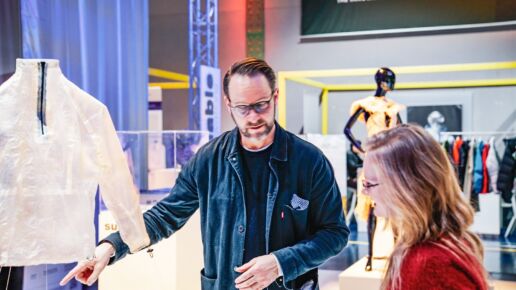
GET INFORMED & INSPIRED AT THE MUNICH FABRIC START
IN THE SUSTAINABLE INNOVATIONS AREA AT KEYHOUSE – H5!
Discover more industry-changing innovations at our upcoming trade shows:
The Textile Industry: What to Expect in the Next Five Years
The Textile Industry: What to Expect in the Next Five Years
Guest post by Muchaneta ten Napel, Founder and CEO, Shape Innovate
The textile industry has undergone remarkable changes, shifting from the use of traditional handlooms to state-of-the-art factories that produce enormous amounts of textiles and clothing. With the quickening pace of technological advancements, shifting consumer preferences, and evolving global trends, the landscape of the textile industry is on the brink of even more significant transformations in the upcoming five years.
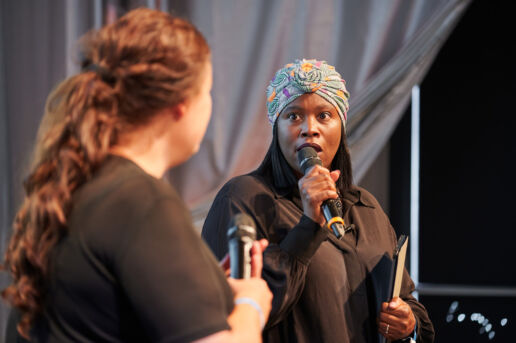
Sustainability, No Longer a Buzzword
Sustainability has evolved from a catchphrase to a prerequisite in the textile sector. The rising consciousness of consumers regarding their environmental impact has compelled textile producers to adopt eco-friendly practices. As a result, the forthcoming half-decade is expected to herald an era where sustainability is the rule, not the exception.
The focus will be reducing hazardous chemicals, water, and energy in textile production. The industry will place greater emphasis on circular production methods and using recycled materials. Brands will strive to decrease their carbon footprint while maintaining the quality and style of their products, ensuring their entire supply chain adheres to sustainability standards.
Technology, A Key Driver
Technological innovation, a key industry driver, will further shape production processes over the next five years. Automation, artificial intelligence (AI), and the Internet of Things (IoT) will redefine production efficiency. Automation will enhance efficiency, reduce manual labour, and minimise production errors, leading to quicker turnarounds, amplified production capacity, and cost reduction.
AI will enable trend prediction, production optimisation, and quality control enhancement. Textile producers will leverage AI tools to analyse data and make informed sourcing, manufacturing, and distribution decisions. By connecting devices and systems, IoT will provide the following:
- Real-time control and monitoring of production processes.
- Thus improving quality control.
- Reducing waste.
- Boosting productivity.
Demand for luxury and premium textile products will rise over the next five years. An increase in consumer financial stability and an expanding middle class in emerging markets like China and India will drive this trend. In addition, the shift in consumer behaviour due to the COVID-19 pandemic towards prioritising comfort, quality, and durability over fast fashion will likely persist.
The Rise of Local Production
The pandemic also highlighted global supply chains’ vulnerability, causing production and delivery disruptions. The coming years will see a rise in local production as brands seek to reduce dependency on foreign suppliers. This shift towards local production will bring quicker turnarounds, lower transportation costs, reduced carbon footprint, and greater control over the supply chain. It will also stimulate local economies by creating job opportunities and nurturing local textile industries.
However, local production comes with challenges, including potentially higher costs than overseas production and the need for a skilled workforce. Nevertheless, the brands that successfully adapt to these shifts and meet evolving consumer needs will flourish in the upcoming years. In addition, the textile industry’s transformation presents an opportunity to address long-standing issues such as environmental sustainability, ethical production, and supply chain transparency, promising an exciting future.
In conclusion, the textile industry is poised for a significant evolution in the next five years, propelled by consumer behaviour, global trends, and technological advancements.
The textile industry is poised for a significant transformation in the next five years. Its evolution presents an opportunity to address long-standing challenges such as environmental sustainability, ethical production, and supply chain transparency.
All in all, it is an exciting time for the textile industry, and the next five years will undoubtedly shape its future.
Are you interested in more in-depth facts and figures on the new textile economy?
Visit the Shape Innovate Lounge in H5 | 04 or attend the mini-lectures in the Keyhouse.

About the author
Founding editor-in-chief of Shape Innovate, Muchaneta has worked in the fashion industry for over 14 years. She is currently one of the leading influencers speaking and writing about the merger of fashion with technology and wearable technology.
Muchaneta ten Napel | m@shapeinnovate.com
THIS ALSO MIGHT BE INTERESTING FOR YOU
The Power of Data: Understanding How Data Tackles Challenges in the Textile Industry
31. January 2025
Data might feel intimidating for the fashion and textile industry, but it holds the power to unlock transparency, boost efficiency, and spark innovation...
MUNICH FABRIC START & BLUEZONE – Essence of Innovative Design & Smart Strategies in Challenging Times
24. January 2025
FLORESCENCE describes the phase in which plants reach their full bloom and is used as a general metaphor for the process of blossoming.
Additionals Trends Spring.Summer 26 – Part 8
20. January 2025
Trims and packaging are branding items we shouldn’t take for granted – they are a signature that transforms the ordinary into the unforgettable.
SPRING.SUMMER 26 FABRIC HIGHLIGHTS & MATERIAL NOVELTIES – PART V
19. January 2025
Their philosophy,“Drawing art with threads, conveying emotions through embroidery,” ensures every product is not just visually stunning but also deeply meaningful.
The Source Collection’s News at MUNICH FABRIC START
19. January 2025
Neutral sand mélange and off-white jacquards set a sophisticated tone, while soft yarn jersey pieces bring effortless comfort.
Additionals Trends Spring.Summer 26 – Part 7
18. January 2025
Whether haptic or visual - it's all about contrasts, which in combination provide impulses and demand new ways of thinking. Perfect for brands that want to make bold statements!
Kantamanto Social Club
17. January 2025
The mission of Kantamanto Social Club is clear: to empower communities in the Global South. It aims to shine a spotlight on communities, particularly those whose circular and regenerative practices have been undervalued for too long.
Curiosity, Courage and Craftmanship
17. January 2025
The projects I selected this season challenge us to rethink everything from raw materials to end products and production processes, whilst emphasising on sustainability as an ongoing dialogue.
Cartoon – Fashion for courage, joie de vivre and self-realisation
16. January 2025
Welcome to Cartoon - your invitation to a life full of courage, joie de vivre and self-realisation!
The Source Collection’s News: EAST
16. January 2025
Fashion is not only about following trends, but also about expressing your creativity and personality.


